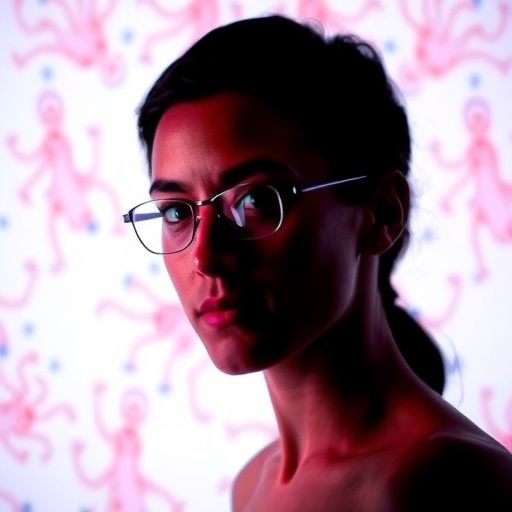Monkey brain scans have revealed new information about the part of the brain that processes visual information. The findings were recently presented in PNAS by neurophysiologists Qi Zhu (KU Leuven) and Wim Vanduffel (KU Leuven/ Harvard Medical School).
When the brain receives visual signals from our eyes, it processes them in a strictly hierarchical way. Specific parts of the visual field are projected onto specific parts of the cortex through the retina. Points that are close together in the visual field are also processed by neighbouring neurons in the visual cortex. This strategy ensures a very accurate representation of the visual field in the cortex. This kind of representation is also repeated multiple times within the hierarchical visual system.
Mapping the visual cortex
First, our brain cells literally make maps of what we see, called ‘retinotopic maps’. These maps are slightly deformed, just like a world map is never a perfect representation of a globe. Our central vision, for example, is processed in much greater detail than our peripheral vision, a difference that the maps reflect. Regions at lower hierarchical levels feed information from the retinotopic maps to higher levels and vice versa, allowing us to finally know what we are seeing.
So, to understand vision, it’s extremely important to identify and precisely locate all these retinotopic maps within our visual cortex.
Similar to Old World monkeys?
Previously, our knowledge on the retinotopic maps was based on research with animals, such as primates, explains Professor Wim Vanduffel from KU Leuven and Harvard Medical School.
“Researchers observed profound differences between monkeys from the Old World – mostly from Africa and Asia – and the New World, the Americas. Moreover, textbooks state that our early visual cortex consists of adjacent parallel bands, just like in rhesus monkeys. Therefore, researchers believe that the human visual cortex is more similar to that of Old World monkeys.”
More detailed brain scans
However, novel technologies have allowed us to fine-tune this view, Vanduffel continues.
“In our study, we used an fMRI scanner (Functional Magnetic Resonance Imaging – ed.). With these scans, we can measure the activity in brain regions activated during specific tasks: for example, a monkey staring at a screen while only a small part of the visual field is stimulated. The technology has been around for a long time, but we considerably improved the spatial resolution, down to about 0.5 mm. This improvement allowed us to scan the entire visual cortex of individual monkeys in the greatest detail, which was impossible with older fMRI and electrophysiological methods.”
Better maps of the visual cortex
The study showed that the areas at the lowest levels of the visual cortex of Old World monkeys are not arranged in adjacent parallel bands.
Vanduffel: “Instead, these areas show a more complex topographic organisation. Surprisingly enough, however, this organisation is similar to the one previously observed in monkeys from the New World. In other words, just as geographic maps become more accurate over time, we have to adjust our knowledge on the topographic organisation of the visual cortex.”
“These improved maps will allow us to navigate the brain more precisely. It’s possible that the visual cortex of humans is organised similarly, but this requires further research with stronger and better MRI scanners.”
###
About KU Leuven
KU Leuven is Europe’s most innovative university. Located in Belgium, it is dedicated to research, education, and service to society. KU Leuven is a founding member of the League of European Research Universities (LERU) and has a strong European and international orientation. Our scientists conduct basic and applied research in a comprehensive range of disciplines. University Hospitals Leuven, our network of research hospitals, provides high-quality healthcare and develops new therapeutic and diagnostic insights with an emphasis on translational research. The university welcomes more than 50,000 students from over 140 countries. The KU Leuven Doctoral Schools train approximately 4,500 PhD students.
More information: http://www.
Media Contact
Wim Vanduffel
[email protected]
Related Journal Article
https:/
http://dx.




